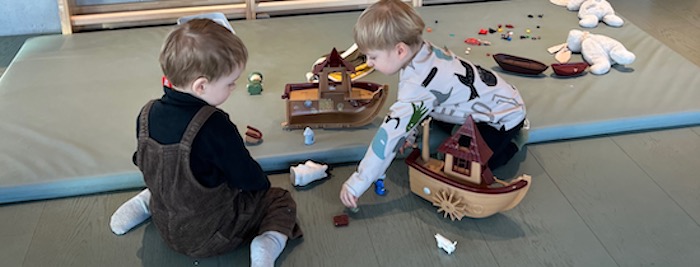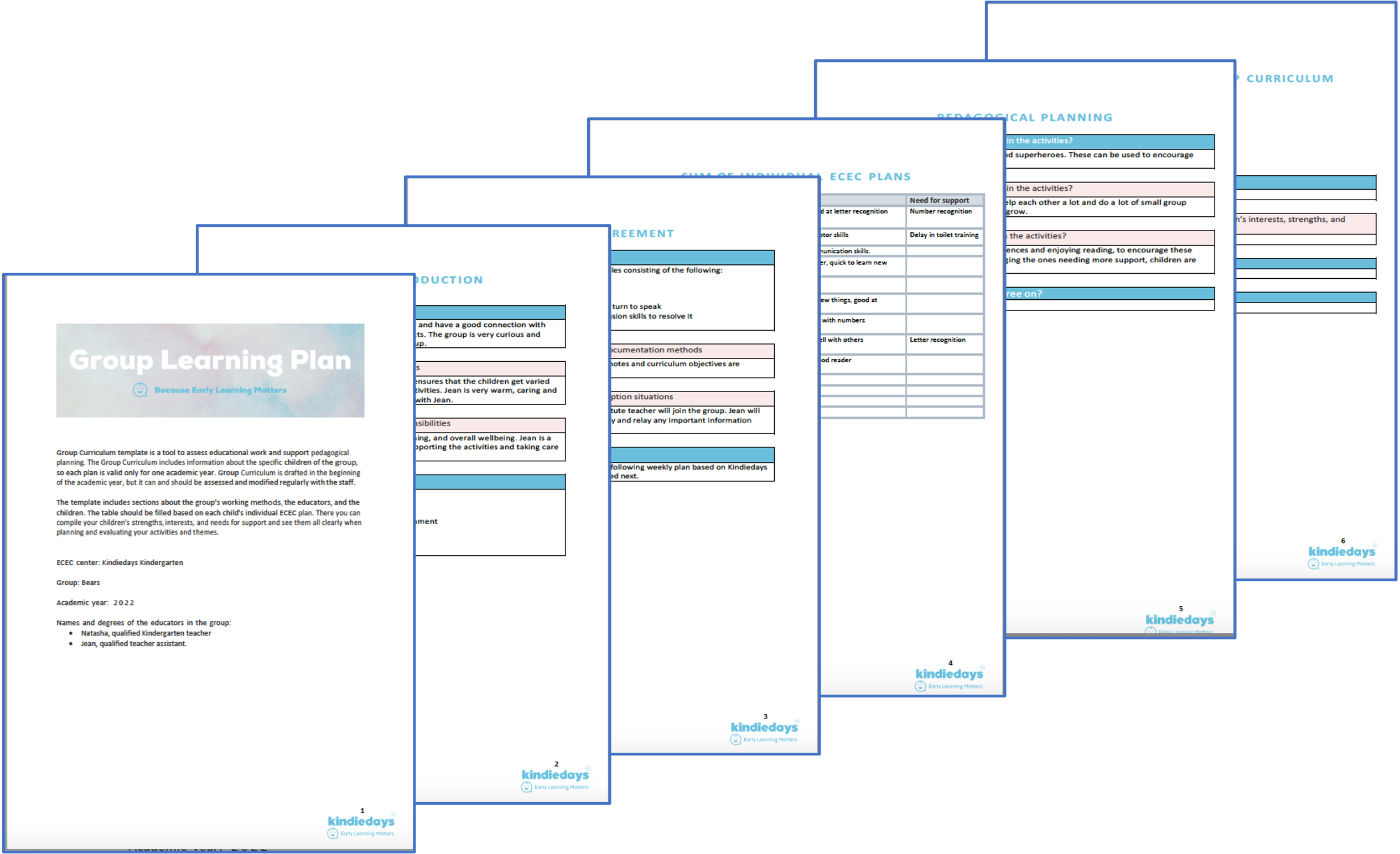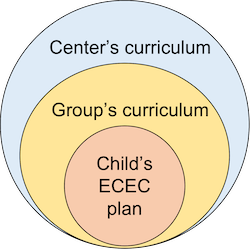Children learn by playing in solitary, in parallel, and in a group.

Playing is the underpinning theme in the Finnish curriculum for early childhood education and care. In ECEC, children get to play every day. They play solitary, in parallel, and in a group. An operating culture that encourages children to play recognizes its significance to children’s well-being and learning. Playing is the main channel through which children express their emotions and an important source of well-being.
Initially, playing is about contact and interaction between an adult and a child. After this, the child begins to show interest in the surrounding world, and playing is targeted at objects and their purposes. During these early stages of play, playing is usually solitary or parallel. Solitary and parallel play gradually change into collaborative play, allowing children to develop interaction and different roles within a group.
The community encourages everyone to be resourceful, use their imagination, express themselves and be creative. Playing allows children to interact with one another. The staff help children join and ensure that all the children are able to be active participants in their peer groups.
What is the role of the Group's Learning Plan?
In the previous two blog posts, we discussed the whole Center's Curriculum and then the Child's Learning Plan. The Group's Learning Plan complements these to strengthen the group level. The Group's Learning Plan has several important themes that help your planning process.
The Group's Learning Plan is a tool to support the process of pedagogical planning and to assess children's learning and overall educational work with the group and with your team.
Download the Group Learning Plan template from Kindiedays!
The Group's Learning Plan is drafted at the beginning of the academic year, but it can and should be assessed and modified regularly with the staff. The Group's Learning Plan includes information about the specific children of the group, so each plan is valid only for one academic year.
The Group's Learning Plan should include information about the group's working methods, educators’ strengths, and the individual qualities of the children.
With your team, discuss the following areas:
- Description of the group of children
- Description of the educators and their strengths
- Description of the educators’ duties and responsibilities
- Learning areas that are available for the group
- Values and rules of the group
- Description of child observation and documentation methods
- Description of working methods in exceptional situations
It is a good idea to include a summary of each Child's Individual Learning Plan in the Group's Learning Plan as well, for example in the form of a simple table. The table should be filled based on the children's strengths, interests, and needs for support. In the form of a table, educators can see all the information clearly when planning and evaluating the group’s activities, learning methods, and themes.
Get your Group Learning Plan template now from Kindiedays and let your group of children reach their best this year!

Example of a Group's Learning Plan
Next steps
Check our previous 2 blog posts and you have a full discussion on how to plan the 3 curriculum levels in your center following Finnish best practices:

Download our Group Learning Plan template and the Child's Individual Learning Plan template. You can use and modify them freely to adapt to your local cultural and national requirements. Start your journey and do the planning step by step. Help children master the skills they are dreaming of. And gain knowledge of areas they wish to understand.
In the parallel watch our video to see how Kindiedays supports the children's learning!
.png)